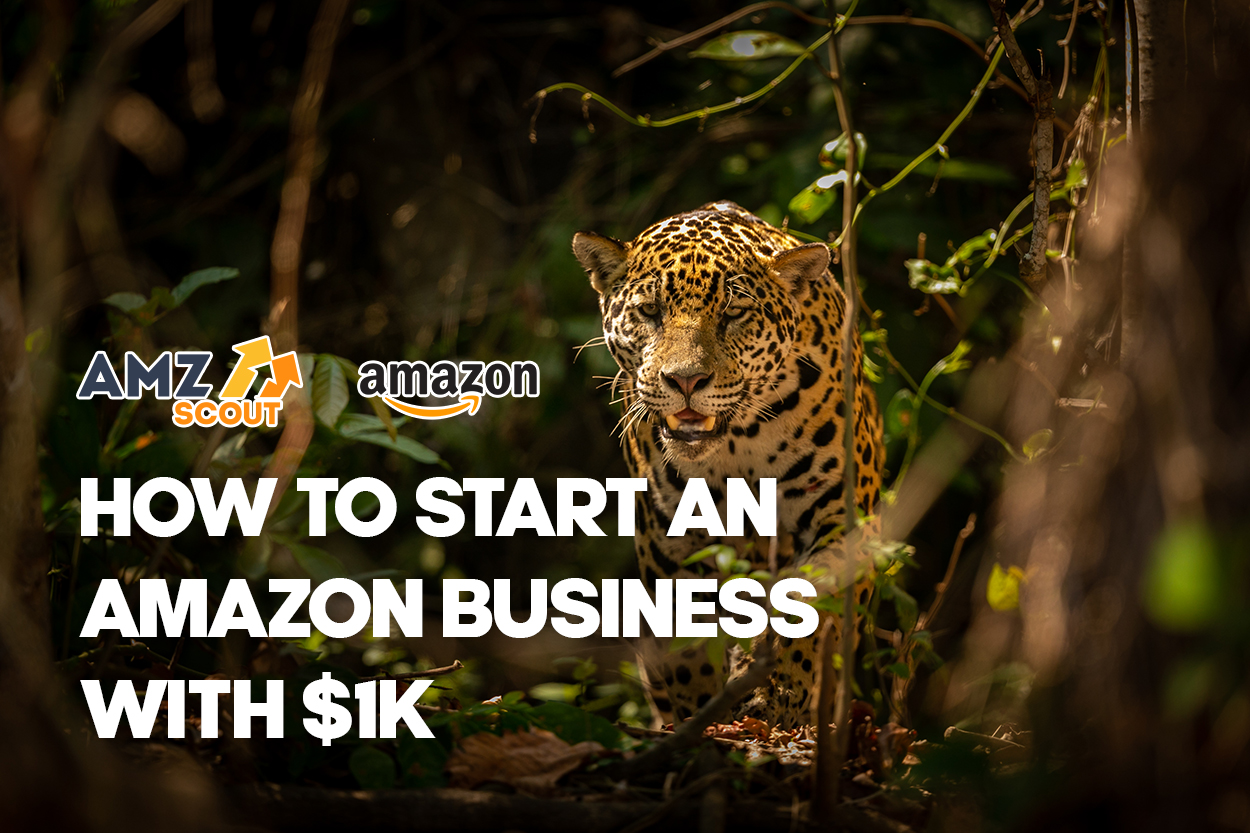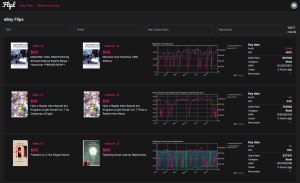Starting an Amazon business with a limited budget can be a daunting task. However, with the right strategy and approach, it is possible to turn a small investment into a profitable venture. In this article, we will explore Online Arbitrage as the fastest way to generate quick profits on Amazon.
Starting Out
Amazon Online Arbitrage refers to a business strategy where sellers purchase products from one online retailer and resell them on Amazon for a higher price. The aim is to find products that are priced lower on one platform and sell them for a profit on another platform. The key to success in Amazon Retail Arbitrage is to identify products that have high demand and low competition, and thus can easily be sold at a higher price on Amazon.
There are five basic steps to making money with Online Arbitrage:
- Choosing a sourcing method
- Analysis of selected products
- Coming up with the pricing strategy
- Setting up seller’s account
- Fulfilling the order
Let’s delve into each of these steps in detail.
Step 1: Choosing the right sourcing method
There are various methods for sourcing products:
-
- Manual Sourcing – Manual sourcing can be very time-consuming since it involves manually searching for products to sell on Amazon. This can be done by visiting physical stores, searching online marketplaces, or attending trade shows. While this process can be a great way to find unique and profitable products to sell, it also takes a lot of time and effort.
- Software Tools – There are various software tools available that can help with product sourcing. These tools can help with tasks such as product research, competition analysis, and price tracking. They can be a valuable asset for any Amazon seller looking to streamline their sourcing process.
- Sourcing Lists –Sourcing lists are very effective for generating profits quickly. OA Beans sourcing lists are comprehensive lists of profitable products that can be purchased at a lower price and sold at a higher price online, serving as a shortcut to finding profitable products. Although they’re not free, sourcing lists can be worth the investment since they save time and effort.
- Hiring a Virtual Assistant (VA) – A virtual assistant can help with tasks such as product research, listing optimization, and customer service. Hiring a VA can free up time for the seller to focus on other aspects of their business.
Using sourcing lists and other product research tools are considered the most effective methods for anyone looking to generate quick profits. However, it is extremely important to find a reliable provider of sourcing lists that has been tried, tested, and trusted by users. Before making a final decision, it’s necessary to check the products from the sourcing list and choose the most promising option.
Step 2: Analyzing Product Profitability
The success of any online arbitrage business depends on the ability to source profitable products. To begin, you need to know what to look for in order to make your product search easier. Here are some general suggestions to help you find the best products:
- Choose products that cost between $15 and $50. Items priced in this range tend to sell relatively quickly, and also ensure that you avoid cheap items that don’t generate a profit.
- Stick to small and lightweight products, since these items require lower shipping costs due to their lower weight and the number of boxes that can fit in a storage area. As a result, you save money on all fronts.
- Focus on low-competition, high-demand products. Initially, you want to avoid products with competition levels that are too high, but still have high enough demand. Try to combine areas with more than 10,000 sales, but not more than 100 reviews (or something similar).
- Be cautious of seasonal products. These include things like snow boots, and are typically only popular during a short period of the year. If you do sell these types of items, plan for when those sales will decline.
- Keep an eye out for “gated” products. These are products that require additional certifications or licenses in order to sell them. In some cases, they may also be trademarked by other groups. You’ll need to account for the extra effort and required steps necessary to sell these products.
If you want to check how well your selected product will sell, you can use AMZScout’s tools. To thoroughly check potential profits, use Amazon Dropshipping, Arbitrage, and Wholesale Extension by AMZScout.
Here are some important metrics every seller should consider, and tips on what to pay attention to when analyzing which products to resell:
- Number and types of sellers: Look for products that have both FBA and FBM sellers, as these tend to perform well. If Amazon itself sells a product, you’ll face stiff competition and a lower likelihood of winning the Buy Box.
- Amazon fees: Consider any fees associated with referring sales and using FBA logistics, as they can significantly impact your profit margins. Factor them into your pricing strategy when evaluating potential products to sell.
- Profit margins: Focus on products with margins over 30% to maximize your profits and ensure that you’re selling products that will provide a healthy return on investment.
- Estimated monthly sales: A product with at least 300 sales per month is considered to have a good level of demand and potential for profitability.
Let’s examine a product that can truly earn you $2k.
Product Example
So, we have found a product that meets all of the above criteria: a baby bottle from a sourcing list with a price of $29.99 on Amazon. Despite the fact that baby products are recommended for sale by most experts, we still need to make sure that we will make a profit.
Using the “Find Suppliers on Alibaba” button in the Amazon Dropshipping, Arbitrage, and Wholesale app, we found this product for a price starting from $1 for large quantities. With our budget of $1,000 we can only afford to buy a smaller batch, which according to the supplier’s price list, will be $3 per item.
Manually checking how profitable this product can be is rather problematic. We don’t know how much Amazon will charge us in fees and how well it will sell. To avoid wasting our time on tedious information searches, we used AMZScout’s convenient Amazon Dropshipping, Arbitrage, and Wholesale tool. Here are three simple steps we took to thoroughly analyze this product:
- We installed the Amazon Dropshipping, Arbitrage, and Wholesale Extension and started a free trial.
- We found the product on Amazon and used the built-in calculator to check potential profits.
- We inputted the “Costs”, which include the initial initial price and all other additional costs.
We can immediately see that the minimum current price at which the product is being sold on Amazon is $29.99. We can also see the Buy Box price and the fees that Amazon will charge if you choose either the FBA or FBM model. The only thing we need to consider are the “Costs”, which include the initial price, taxes, shipping, and promotional costs. After rounding up each component and summing everything up, we arrived at a total value of $9 per item.
You can see from the table below that, considering our budget, we can afford the first batch of 75 items. Adding Amazon fees and costs to the price, we will need to spend $990 in order to sell the first batch.
| Initial product price | $3 |
|---|---|
| Additional costs for each item | $6 |
| Amazon fees | $4.20 |
| Minimum price on Amazon | $28 |
| The best price we can offer | $27 |
| Number of items we can buy for $1,000 | 75 |
| Revenue we can earn from selling 75 items | $2,025 |
| Net Profit | $1,110 |
By following these tips and recommendations, you can find profitable products for Online Arbitrage on Amazon and easily generate profits. To do so, use sourcing lists and check products with research tools to ensure that they have high demand, low competition, and can be sold at a higher price on Amazon. With the right strategy and tools, Online Arbitrage can be a lucrative business model for sellers on Amazon.
Step 3: Coming up with a pricing strategy
Before we officially start our business, we need to have a clear understanding of the prices at which we will be selling our products. The Minimum prices and Buy Box price from the calculator provide a starting point for consideration, but they should not be your final decision. Here are some general tips and recommendations on how to set prices when using Online Arbitrage on Amazon:
- Research the competition: Check the prices of similar products on Amazon and other marketplaces to get an idea of the market value.
- Consider the level of demand: Products with high demand can be priced higher, while products with lower demand may need to be priced lower in order to sell.
- Factor in your costs: Calculate your costs, including the purchase price, shipping, taxes, and Amazon fees, to determine the minimum price at which you need to sell the product in order to make a profit.
- Set a competitive price: Price your product competitively to attract buyers and outperform your competitors.
- Monitor and adjust prices: Keep an eye on your product’s performance and adjust the price as needed to maximize your profits.
Step 4: Registering as a seller
If you wish to sell any products on Amazon, you must first create a seller account, which will grant you access to Amazon Seller Central, where you will manage your account. Here’s what you need to do to register as a seller:
- Visit Amazon’s Registration page. You can use your existing Amazon account to save time, but make sure the information is accurate, as you will need to verify it later.
- Enter your name, address, and contact information.
- Verify your bank account.
- Submit photos of your ID
- Receive a postcard with a code to verify your physical address.
- Complete a video interview with Amazon.
- Provide bank statements and forms of ID to confirm your identity.
You will also need to provide a valid payment card to sign up for an Amazon Individual or Professional Account. An Individual Account costs $0.99 per listing, while the charge for a Professional Account is $39.99/month, and there is no additional charge per listing. Professional Accounts also offer more advertising features, which is ideal if you plan to sell more than 40 items.
Step 5: Last but not least: Fulfilling the order
Now that we have selected our product, opened an account, and started making sales, it’s time to start focusing on managing and processing orders effectively. At this point, it’s crucial not to exceed your planned budget. Here are some recommendations for organizing your order fulfillment efficiently in order to avoid overpaying.
- Organize and track inventory: It’s essential to avoid overselling or underselling products. Use inventory management software to track your inventory levels, set reorder points, and receive alerts when stock levels are low. This will help you avoid stockouts and ensure that you always have enough inventory to fulfill orders.
- Fulfill orders in a timely manner: Customers expect fast and reliable shipping, so it’s crucial to fulfill orders promptly. Use shipping software that integrates with your inventory management system to streamline the fulfillment process. This will help you generate shipping labels, track packages, and update customers on the status of their orders.
- Handle customer service: Providing excellent customer service is essential for building a loyal customer base. Respond to customer inquiries promptly and professionally, and resolve any issues or complaints in a timely manner. Use customer service software to manage customer inquiries and track customer interactions.
- Use automation tools: Amazon automation tools can help you save time and streamline your operations, such as sending order confirmation emails or updating inventory levels. This will help you focus on growing your business and providing excellent customer service.
- Monitor your metrics: Keep track of your key performance indicators (KPIs) to measure the success of your business. Monitor metrics like sales, profit margins, and customer satisfaction to help you identify areas for improvement and make data-driven decisions.
Final Thoughts
As you can see, it’s quite possible to double your capital in a short period of time with the right tools. The question is, are you ready to stop there? Online Arbitrage is an excellent business strategy for those who always want more. You can try different products, explore various niches, compare products, and optimize your expenses. Believe in yourself, test your ideas, and you’re sure to achieve success with your first product.








